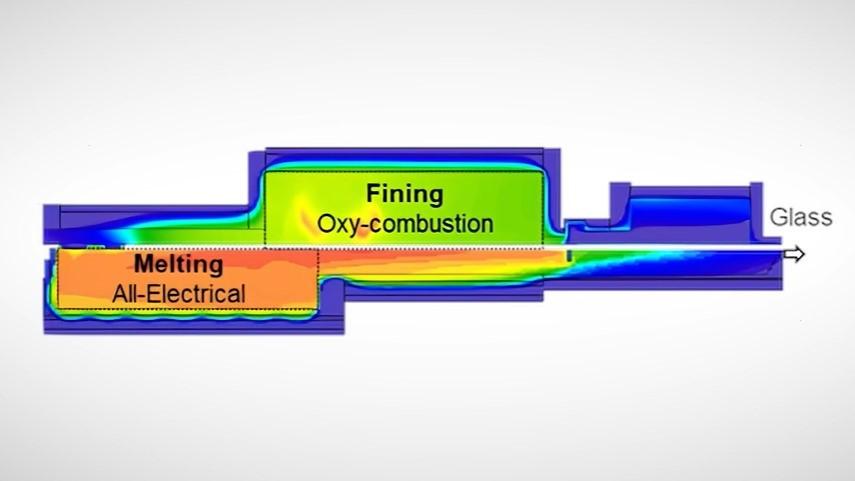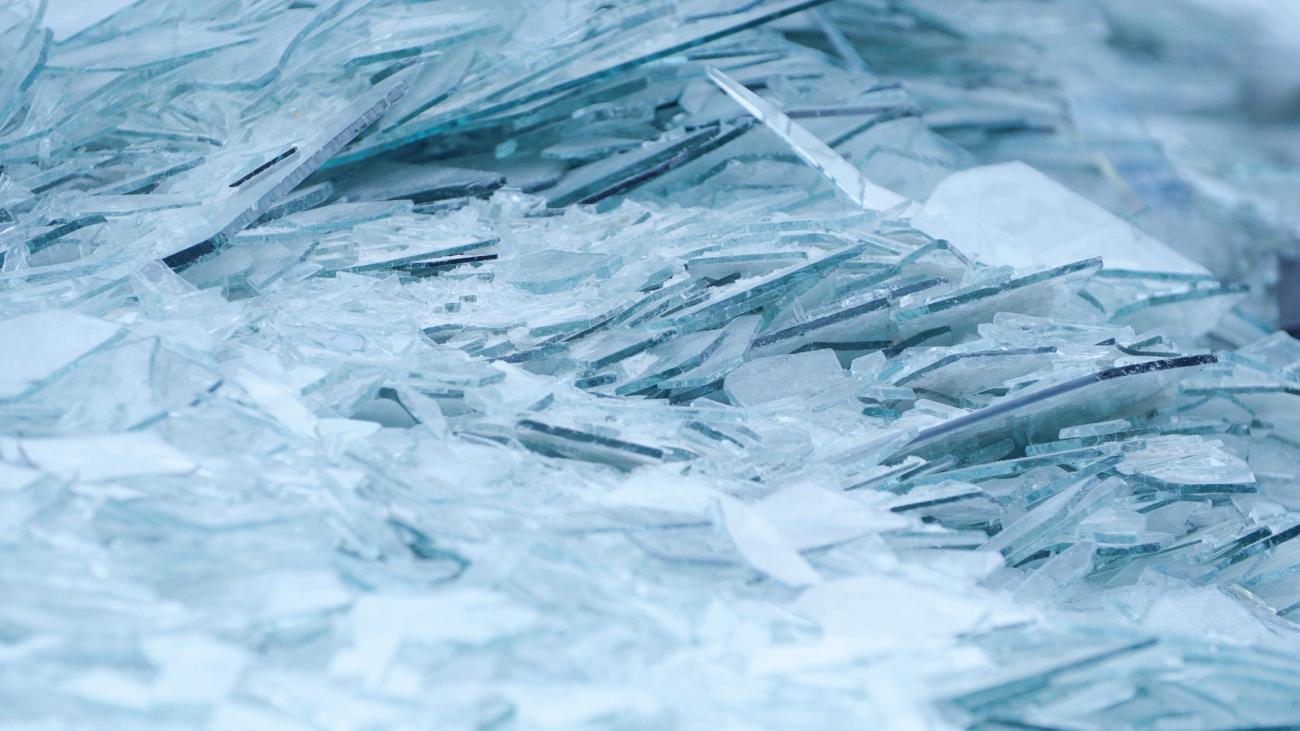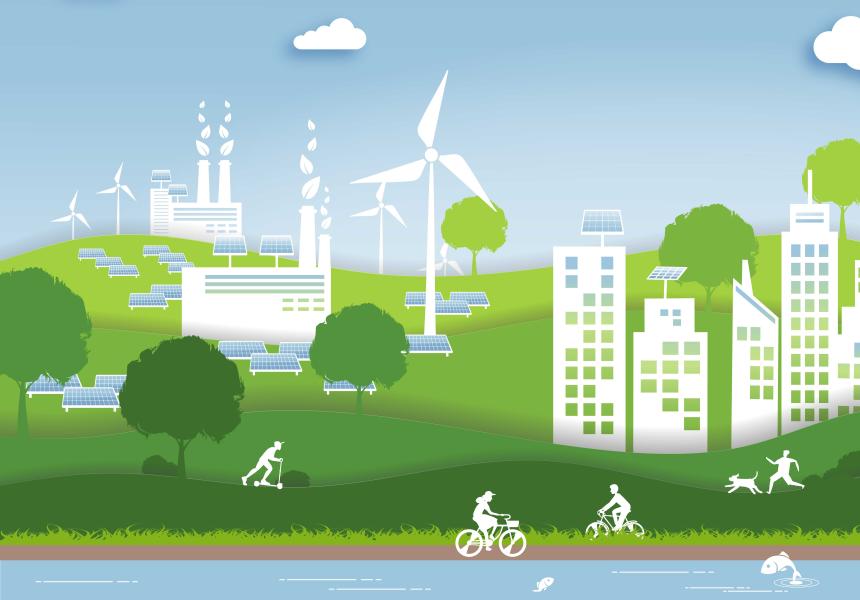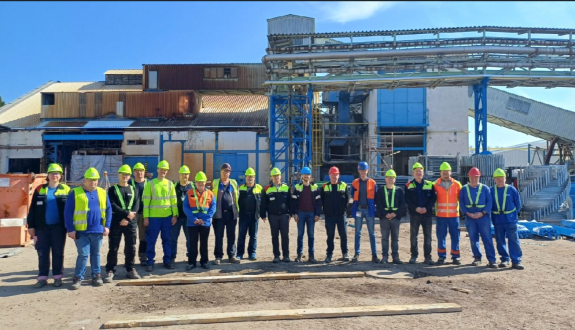Le projet Volta en un coup d’œil
Cette conception intégrée fournit une alternative à l’industrie du verre plat, où l’on se sert majoritairement de fours au gaz naturel.
Vidéo avec Marc Foguenne, VP Durabilité d’AGC Glass Europe et responsable du projet Volta. Pendant cet entretien, Marc explique plus en détail le projet et en présente le contexte, les objectifs, les solutions techniques appliquées et la réparation à froid en cours.
Pouvez-vous nous dire quelques mots de cette nouveauté technologique et des réductions d’émissions de carbone attendues ?
Ce nouveau concept a été mis au point dans le cadre d’un partenariat avec Saint-Gobain et est mis en œuvre dans le four à verre imprimé existant d’AGC à Barevka en République tchèque. Une fois complètement renouvelée, la ligne de production sera électrifiée à 50 % et alimentée à 50 % par une combinaison d’oxygène et de gaz, contrairement à ce qui est habituel dans le secteur, où les fours fonctionnent pratiquement à 100 % au gaz naturel. De même, la consommation de matière sera fortement réduite grâce à un taux élevé de matériaux recyclés. Il s’agit là de deux importantes avancées technologiques par rapport aux procédés actuellement utilisés dans les fours à verre plat.
On s’attend à ce que ce four hybride permettra de réduire de 75 % les émissions énergétiques du four (scope 1 et 3), soit une diminution de plus de 193 000 tonnes d’équivalent CO2 sur les dix premières années de fonctionnement. De plus, la totalité de l’usine sera alimentée en électricité verte.
Photo: vue schématique - pas le projet réel
Quelles sont les promesses de cette technologie en termes de circularité et de normes ?
Afin de mettre en œuvre notre nouvelle technologie à électrofusion, l’ancien four à verre imprimé du site de Barevka en République tchèque a été mis à l’arrêt pour ce que nous appelons une « réparation à froid ». Cette opération consiste à refroidir le four et à l’arrêter complètement. Les travaux de rénovation ouvriront la voie à la conversion de la ligne de production. Cette prochaine phase devrait être réalisée et le nouveau four être prêt à fonctionner d’ici début 2025.
Outre les émissions de carbone les plus faibles possibles, l’usine rénovée atteindra également les normes les plus élevées en termes de sécurité, d’environnement (NOx, SOx), de consommation d’énergie et de qualité. L’accent est également mis sur la circularité, car la nouvelle ligne fonctionnera avec un taux élevé de matériaux recyclés, bien supérieur aux normes de l’industrie. La ligne de production rénovée aura le double atout d’un taux d’émissions le plus bas possible associé à un taux de matériaux recyclés le plus élevé.
La nouvelle ligne de verre plat sera ainsi la plus durable du secteur ; elle constituera un grand pas vers la neutralité carbone des deux entreprises et apportera une contribution importante à l’accélération nécessaire de la décarbonation de l’industrie du verre plat.
Pour plus de détails, consultez la page web du projet Volta (en anglais)
Le projet de R-D « Volta » est financé par le Fonds pour l’innovation de l’Union européenne*.
(*) Les vues et opinions exprimées sont toutefois celles de l’auteur (des auteurs) uniquement et ne reflètent pas nécessairement celles de l’Union européenne ou de l’Agence exécutive européenne pour le climat, les infrastructures et l’environnement (CINEA). Ni l’Union européenne ni l’autorité de subvention ne peuvent être tenues responsables de celles-ci.






